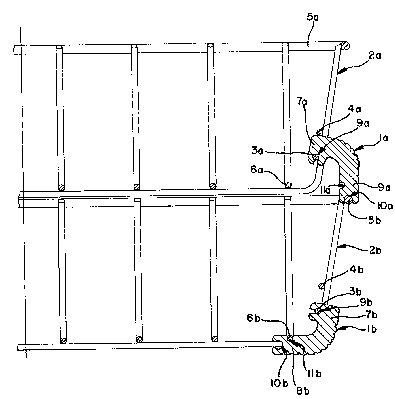Some of the information on this Web page has been provided by external sources. The Government of Canada is not responsible for the accuracy, reliability or currency of the information supplied by external sources. Users wishing to rely upon this information should consult directly with the source of the information. Content provided by external sources is not subject to official languages, privacy and accessibility requirements.
Any discrepancies in the text and image of the Claims and Abstract are due to differing posting times. Text of the Claims and Abstract are posted:
| (12) Patent Application: | (11) CA 2053011 |
|---|---|
| (54) English Title: | TRAY TRACKING SYSTEM |
| (54) French Title: | SYSTEME D'EMPILAGE DE PLATEAUX |
| Status: | Deemed Abandoned and Beyond the Period of Reinstatement - Pending Response to Notice of Disregarded Communication |
| (51) International Patent Classification (IPC): |
|
|---|---|
| (72) Inventors : |
|
| (73) Owners : |
|
| (71) Applicants : |
|
| (74) Agent: | CASSAN MACLEAN |
| (74) Associate agent: | |
| (45) Issued: | |
| (22) Filed Date: | 1991-10-08 |
| (41) Open to Public Inspection: | 1992-10-04 |
| Examination requested: | 1991-10-08 |
| Availability of licence: | N/A |
| Dedicated to the Public: | N/A |
| (25) Language of filing: | English |
| Patent Cooperation Treaty (PCT): | No |
|---|
| (30) Application Priority Data: | ||||||
|---|---|---|---|---|---|---|
|
ABSTRACT OF THE DISCLOSURE
A tray stacking system utilizes a crescent-
shaped connector for attaching a plurality of stacked
trays, the connector having a head portion and a tail
portion. The head portion has a groove formed therein
for attaching to a rung of a top tray. The tail
portion has a groove formed therein for attaching to
the top rung of a bottom tray. The connector also
functions as a base for the bottom tray, and has a side
groove formed in the tail portion for attaching to a
base rung of a bottom tray.
Note: Claims are shown in the official language in which they were submitted.
Note: Descriptions are shown in the official language in which they were submitted.

2024-08-01:As part of the Next Generation Patents (NGP) transition, the Canadian Patents Database (CPD) now contains a more detailed Event History, which replicates the Event Log of our new back-office solution.
Please note that "Inactive:" events refers to events no longer in use in our new back-office solution.
For a clearer understanding of the status of the application/patent presented on this page, the site Disclaimer , as well as the definitions for Patent , Event History , Maintenance Fee and Payment History should be consulted.
| Description | Date |
|---|---|
| Inactive: IPC from MCD | 2006-03-11 |
| Time Limit for Reversal Expired | 1994-04-10 |
| Application Not Reinstated by Deadline | 1994-04-10 |
| Inactive: Adhoc Request Documented | 1993-10-08 |
| Deemed Abandoned - Failure to Respond to Maintenance Fee Notice | 1993-10-08 |
| Application Published (Open to Public Inspection) | 1992-10-04 |
| All Requirements for Examination Determined Compliant | 1991-10-08 |
| Request for Examination Requirements Determined Compliant | 1991-10-08 |
| Abandonment Date | Reason | Reinstatement Date |
|---|---|---|
| 1993-10-08 |
Note: Records showing the ownership history in alphabetical order.
| Current Owners on Record |
|---|
| FELLOWES MANUFACTURING COMPANY |
| Past Owners on Record |
|---|
| STANLEY GRESENS |